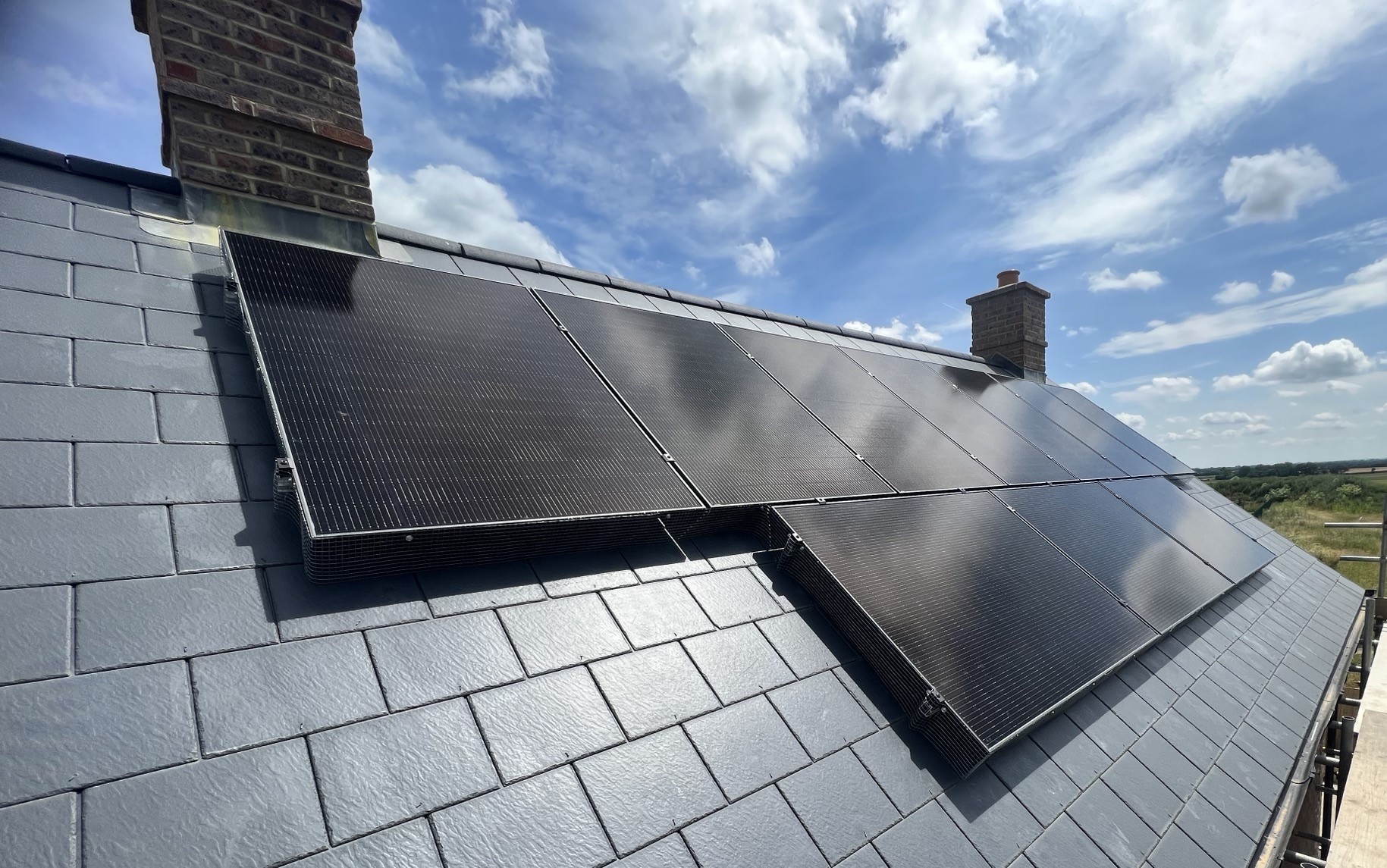Curious about how solar panels are made? Need to know how solar panels generate electricity for your home? At SolarTherm UK we take pride in providing all the information you need to make an informed decision, understanding the manufacturing process of solar panels will help you see why solar is such a smart investment for UK homes.
How Are Traditional Solar Panels Manufactured?
Solar panels are made up of solar cells, which are the components that convert sunlight into electricity. Most residential solar panels use either monocrystalline or polycrystalline silicon cells.
Here’s a step by step look at the manufacturing process:
1. Melting Crystalline Silicon into Cylinders
Monocrystalline panels are made from a single fragment of high-purity silicon that is melted and formed into a cylindrical ingot. Small amounts of boron or gallium are added to give it a positive electrical charge. Polycrystalline panels are made by melting several silicon fragments together.
2. Cutting Silicon into Wafers
The silicon cylinders are then cut into thin wafers and become solar cells. Each cells is coated with phosphorus on one side to create a negative charge, while the other side retains its positive charge. This allows the flow of electrons to create an electrical charge. An anti-reflective coat is also added to the solar cells at this point to increase maximum absorption. Silicon is a photovoltaic (PV) material meaning it can convert sunlight into electricity.
3. Adding Metal Conductors and Wiring
Thin strips of silver are printed onto the front of the solar cells and copper wires connect the cells at the back. These metal conductors collect and transport the electricity generated from sunlight.
4. Attaching Cells to a Clear Pane
Solar cells are then mounted onto a pane of glass using an adhesive material to form a grid pattern. This pane protects the cells from damage by weather, dust or debris.
5. Adding a Backsheet
Another layer of adhesive is added followed by a protective backsheet. Thie solar cells are now sandwiched between the clear front pane and a backsheet. This is then heated under vacuum pressure to create a secure and airtight unit.
6. Installing a Frame and Junction Box
An aluminium frame is added to strengthen the panel and a junction box is installed on the back. The junction box collects the electricity and regulates the flow into your home electrical system.
7. Quality Testing
Every stage of manufacturing involves rigorous testing. Solar cells and panels are checked for cracks, efficiency and electrical output to ensure high-quality performance and safety standards.
How Are Other Types of Solar Panels Made?
Aside from monocrystalline and polycrystalline panels, other innovative solar panel types include:
- Thin-Film Solar Panels – PV material is layered onto a flexible sheet of glass, plastic or metal then cut into solar cells.
- Organic Solar Panels – made from organic compounds, these panels are lightweight and flexible, but currently far less efficient that other types of solar panel.
- Perovskite Solar Panels – these use a synthetic material with high efficiency potential. Perovskite panels are still in development phase due to their faster degradation rate than traditional solar panels.
- Quantum Dot Solar Panels – quantum dots are artificial atoms, used to create highly efficient panels. They are not currently available on the UK market.
- Zombie Solar Panels – also called dye-sensitised panels, these can generate small amounts of electricity indoors and are currently still experimental.
Where Are Solar Panels Made?
Most solar panels are made in factories across China, including major solar panel companies like JA Solar and Aiko Solar. At SolarTherm UK we use Bovill.tech solar panels which are assembled in the UK, using components from the US, Italy, Turkey and China, and come with a UK based 99 year warranty.
Ready to Start Your Solar Journey?
Manufacturing of solar panels is a complex process that continues to evolve. While traditional silicon cell panels dominate today, the future is looking to include perovskite, quantum dot and other innovative panels.
For homeowners in the UK, this means more efficient panels that generate more electricity resulting in lower energy bills and a faster return on investment as solar panel costs continue to drop while energy prices rise.
Switching to solar is not just good for the environment, it’s a smart financial choice too. By choosing an MCS-certified installer like SolarTherm UK, you are ensuring that your solar PV system is installed with the highest quality components and experienced fitters.
Contact SolarTherm UK today for a free no obligation quote and design, tailored to your property, usage and future energy needs. No hard sell, just honest, expert advice. As a Gold Standard Member of EPVS our performance and returns estimates are independently verified for accuracy.
Your home. Your energy. Your future.





